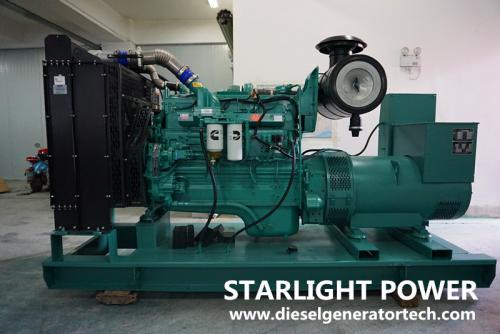What Is Requirements of Standby Generator

What Is a Generator General Requirements
The
fuel supply on site must be sufficient for the generator to operate at full
output for at least six hours.
Diesel
is the preferred source of fuel for a generator and is code required for all
Legally Required Emergency Systems. Diesel fuel is stored on site in either a
fuel tank mounted to the base of the generator (sub-base fuel tank) or in a
remote tank with a day tank in the generator room.
Natural
gas from the utility company is allowed as the fuel source in Residential Group
R-2 occupancies and for standby power systems, but it requires a cut-off valve
to separate the supply from that of other appliances that run on gas.
All
generators must be listed according to the UL 2200 standard by Underwriters
Laboratories
Generators
and their associated electrical distribution systems must be located in a
separate room from the main electrical service equipment. This must be a
dedicated room with a fire barrier rated for at least two hours and/or
horizontal assemblies according to section 712 of the NYC Building Code
Only
fuel tanks that will be used for the generator are allowed in the room, and the
only piping allowed is that of sprinkler systems, or any piping required by
generator cooling systems. Piping associated with other systems may go through
the room, but only if it is uninterrupted
Multiple
generators may share a fuel supply if they will power only emergency loads, or
a combination of emergency and optional standby loads
All
equipment that is powered by fuel combustion, including emergency and standby
generators, must be registered with the NYC Department of Environmental
Protection
Automatic
transfer switches and their associated electrical feeders must be located in a
separate room from both the main service equipment and the generator. If the
ATS is not located at the load, it must have a dedicated room with similar
requirements as that used for the generator: a 2-hour fire barrier or
horizontal assemblies, and having no piping other than sprinkler systems
When is a Generator
Required for Emergency Power?
As
mentioned above, emergency generators are legally required for any electrical
systems where interruption of the power supply can cause hazards for human
life. The NYC Building Code requires emergency power in the following
applications:
Voice
and alarm systems in occupancies classified as Assembly Group A: this includes
most locations where groups of people gather for civic, social, religious or
similar purposes.
All
exit signs and means of egress illumination must be provided with emergency
power, regardless of location, even those on temporary buildings such as tents.
Note that this can be accomplished using battery backup systems for smaller
buildings and in certain occupancies.
Semiconductor
fabrication facilities
Any
location with toxic, highly toxic or pyrophoric materials must have emergency
power, and in the case of hazardous materials it can be either standby or
emergency power
High-rise
and underground buildings must have both emergency and standby power.
Doors
in occupancies classified as Institutional Group I-3, inhabited by five or more
persons who are under restraint due to security reasons, for example prisons
and mental healthcare facilities
Emergency
power is required for specific elevator system components: controls, cab
lights, ventilation and any equipment that is necessary for operation
Post Your Ad Here
Comments